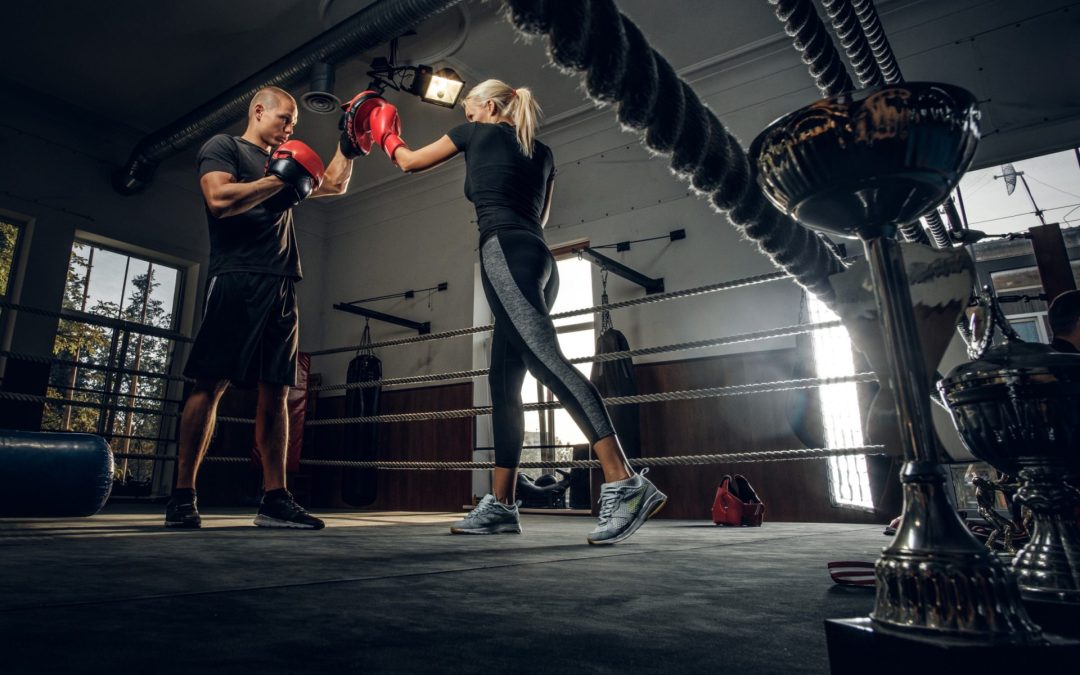When it comes to building strong and toned arms, it’s easy to focus on the wrong muscles. Many people think it’s all about the biceps and triceps, but if this is how you are training, you are missing a key link. There is one major muscle group that has a huge impact on the aesthetics and function of our upper body that is often completely overlooked.
Yes, we’re talking about shoulders!
Shoulders, or the deltoid muscles, are what some would call the unsung heroes of the arms. They play a massive role in how our arms look, whether it’s toned and defined or soft and flabby.
Let’s face it, who doesn’t want to rock a tank top or a cute sleeveless dress and feel amazing in their own skin? There’s nothing quite like feeling confident and comfortable in what you’re wearing, especially when it shows off your hard-earned muscle definition.
But here’s the thing, strong shoulders aren’t just about looking good. They’re also essential for preventing injuries and performing everyday activities.
Have you ever tried carrying a heavy bag of groceries or lifting a suitcase without using your shoulders? It’s pretty much impossible! That’s why it’s crucial to keep them strong and healthy through regular shoulder workouts. By targeting all parts of the shoulder muscles with a variety of exercises, you can achieve a well-rounded and functional upper body.
Whether you’re an athlete or a fitness enthusiast, you already know that strong shoulders can take your performance to the next level. In this article, we’ll explore the best shoulder exercises, how to get stronger shoulders, how to fix shoulder impingement, and a workout routine you can follow. It’s time to focus on those shoulders!
Seated Dumbbell Shoulder Press – Learn the Correct Form
Deltoid Stretch and Activation
Before diving into a shoulder workout, it’s essential to properly stretch and activate your deltoid muscles to prevent injury and maximize the effectiveness of your workout.
Here are a few deltoid stretches and activation exercises to incorporate into your routine:
- Shoulder Circles: Start by standing with your feet shoulder-width apart with your arms at your sides. Slowly rotate your shoulders forward, focusing on shoulder flexion, and making small circles with your arms. After several repetitions, switch directions and create backward circles.
- Arm Swings: Stand with your feet shoulder-width apart and your arms straight out to the sides. Swing your arms back and forth across your body, allowing them to gently tap your chest at the bottom of each swing.
- Doorway Stretch: Stand in a doorway with one hand on each side of the frame. Lean forward through the doorway, feeling a stretch in your shoulders and chest.
- Banded Shoulder Pass-Through: Hold a resistance band with both hands. Holding the band tight, press your arms straight out in front of you, then slowly raise your arms and rotate your hands outward, and pull back until the band touches the backside of your body. Then return to starting position.
These stretches and activation exercises can help warm up your shoulder muscles, improve flexibility, and prevent injury during your workout. Incorporate them into your routine before picking up those dumbbells or hitting the gym.
Scapular Retraction
Scapular retraction is the movement of the shoulder blades towards the spine, which is important for maintaining proper posture and preventing shoulder injuries. The muscles that attach to the shoulder blades, such as the rhomboids, middle trapezius, and lower trapezius, work together to achieve scapular retraction. Strengthening these muscles through exercises like rows, pull-ups, and shoulder blade squeezes can improve posture, reduce the risk of injury, and enhance athletic performance in sports that require upper body strength and stability.
Scapular retraction can be incorporated into rehabilitation programs for individuals with shoulder injuries or incorporated into a regular fitness routine for overall health and well-being. By focusing on scapular retraction, individuals can improve their upper body strength, reduce discomfort, and improve their overall quality of life.
Deltoid Ligament
The deltoid ligament is a strong, triangular-shaped ligament located on the inside of the ankle. It is composed of several ligamentous bands that help to stabilize the ankle joint, preventing excessive inward rotation or eversion. The deltoid ligament connects the tibia bone to the talus, calcaneus, and navicular bones of the foot, creating a strong support structure for the medial aspect of the ankle.
Injury to the deltoid ligament can occur as a result of ankle sprains, trauma, or repetitive stress. Common symptoms of deltoid ligament injury include pain, swelling, bruising, and instability of the ankle joint. Depending on the severity of the injury, treatment options may include rest, ice, compression, elevation, immobilization, and physical therapy.
If the deltoid ligament is completely torn, surgery may be necessary to repair the ligament and restore stability to the ankle joint. Rehabilitation following a deltoid ligament injury typically includes exercises to improve ankle range of motion, strengthen the surrounding muscles, and restore balance and proprioception.
It is important to properly diagnose and treat a deltoid ligament injury as soon as possible to prevent long-term complications such as chronic pain, instability, and arthritis. Proper footwear and ankle support can also help to prevent deltoid ligament injuries, particularly for athletes or individuals who engage in activities that place stress on the ankle joint.
Deltoid Ligament Ankle
The deltoid ligament is a strong ligament that connects the tibia bone to the ankle bones on the inside of the ankle. It plays an important role in stabilizing the ankle joint and preventing excessive inward rolling of the ankle. Stretching and activating the deltoid ligament can help to prevent ankle sprains and improve ankle stability.
To stretch the deltoid ligament, one can perform ankle eversion exercises. This involves turning the foot outwards while keeping the heel in place, which will stretch the ligament on the inside of the ankle. Another stretch is the ankle dorsiflexion stretch, which involves bringing the toes towards the shin, stretching the muscles and ligaments on the front of the ankle.
To activate the deltoid ligament, one can perform exercises such as ankle circles and heel raises. Ankle circles involve rotating the ankle in a circular motion, which will activate the muscles and ligaments around the ankle joint. Heel raises involve standing on the balls of the feet and lifting the heels off the ground, which will also activate the muscles and ligaments around the ankle.
Stretching and activating the deltoid ligament can help to prevent ankle injuries and improve ankle stability. Incorporating these exercises into a regular stretching and strengthening routine can help to maintain healthy ankles and improve overall mobility and function.
Shoulder Rolls
Shoulder rolls are an effective way to stretch and activate the muscles in the shoulders, neck, and upper back. This simple exercise involves rolling the shoulders forward and backward in a circular motion, which can help to increase mobility and flexibility while also reducing tension and discomfort in the upper body.
Performing shoulder rolls regularly can improve posture and reduce the risk of developing shoulder and neck pain. It can also be used as a warm-up exercise before a workout or as a cool-down exercise after a workout.
To perform shoulder rolls, start by standing or sitting upright with your arms at your sides. Slowly roll your shoulders forward, bringing them up towards your ears, then back and down. Repeat this movement several times, then reverse the direction and roll your shoulders backward. Continue this circular motion for several repetitions, focusing on moving smoothly and slowly.
Adding resistance to shoulder rolls, such as holding weights or resistance bands, can increase the intensity of the exercise and further strengthen the muscles in the shoulders, neck, and upper back.
Overall, shoulder rolls are a simple yet effective exercise for stretching and activating the muscles in the upper body. Incorporating them into a regular stretching and strengthening routine can improve posture, reduce tension and discomfort, and promote overall upper body health and function.
Horizontal Abduction
Horizontal abduction is an exercise that involves moving the arms away from the body in a horizontal direction, which can help to stretch and activate the muscles in the shoulders and upper back. This exercise can be performed with or without weights, making it a versatile option for individuals at different fitness levels.
To perform horizontal abduction, start by lying on your stomach with your arms outstretched to the sides, palms facing down. Slowly lift your arms off the ground, keeping them straight and in line with your shoulders. Pause at the top of the movement, then slowly lower your arms back down to the starting position.
This exercise can also be performed while standing, with the arms out to the sides and parallel to the ground. Slowly bring the arms together in front of the body, then slowly move them back out to the starting position.
Incorporating horizontal abduction into a regular stretching and strengthening routine can help to improve posture, reduce tension and discomfort in the shoulders and upper back, and increase mobility and flexibility. It is a simple yet effective exercise that can be performed anywhere, making it an ideal option for individuals looking to improve their upper body health and function.
Shoulder Impingement Exercises
If you already have shoulder issues, it may be shoulder impingement. Shoulder impingement is a common injury that can occur when the tendons in your shoulder become inflamed and rub against your shoulder blade.
Shoulder impingement is a common condition that causes pain and discomfort in the shoulder joint. It occurs when the tendons and bursa in the shoulder become compressed or pinched by the surrounding bones, particularly the acromion bone of the shoulder blade. This can result in inflammation, swelling, and pain when the arm is raised or rotated.
Several factors can contribute to shoulder impingement, including repetitive overhead movements, poor posture, and age-related degeneration. Treatment options for shoulder impingement include physical therapy, rest, ice, and anti-inflammatory medication. In more severe cases, corticosteroid injections or surgery may be required to alleviate symptoms and improve shoulder function.
Early diagnosis and treatment can help prevent long-term shoulder damage and disability.
Fortunately, several exercises can help alleviate the pain and prevent further injury. Here are a few shoulder impingement exercises to try:
- Wall Angels: Stand with your back against a wall and your feet about six inches away. Raise your arms to shoulder height, keeping your elbows and wrists against the wall. Slowly raise your arms overhead, maintaining contact with the wall. Lower your arms back down to shoulder height and repeat for several repetitions.
- External Rotations: Hold a light dumbbell or resistance band in one hand. Start with your elbow bent at a 90-degree angle and your forearm parallel to the floor. Rotate your forearm outward, keeping your elbow close to your body. Slowly lower the weight back down and repeat for several repetitions before switching arms.
- Scapular Squeezes: Sit or stand with your arms at your sides. Squeeze your shoulder blades together, pulling them down and back. Hold for several seconds before releasing and repeating for several repetitions.
These exercises can help strengthen the muscles around your shoulders, improving stability and reducing the risk of impingement.
Remember, it’s important to start with light weights and gradually increase the intensity as your strength improves. Always listen to your body and avoid pushing yourself too hard.
Dumbbell Shoulder Exercises
Dumbbell shoulder exercises are an excellent place to start when trying to build your shoulders.
These exercises target all parts of your shoulder muscles, including the front, middle, and rear deltoids, as well as the trapezius muscles. By using dumbbells, you also get the bonus of training the stabilizing muscles of your shoulders. Shoulder machines don’t allow this opportunity.
Overhead Press
One of the most effective dumbbell shoulder exercises is the overhead press.
You can do this exercise either standing or sitting. You can also modify it by using a barbell or a resistance band.
- Hold a pair of dumbbells at shoulder height with your knuckles pointing straight up.
- Keep your elbows slightly in front of your body.
- Push the dumbbells overhead, working your shoulder muscles through a full range of motion.
- Slowly lower the dumbbells back to the starting position.
Arnold Press
Another popular and challenging dumbbell shoulder exercise is the Arnold press.
The Arnold Press was popularized by Arnold Schwarzenegger and is great for targeting all three heads of the shoulder muscle.
- Start by holding a pair of dumbbells at shoulder height with your palms facing your body.
- Rotate your palms forward so that they face away from you.
- Press the dumbbells overhead while simultaneously rotating your palms back to the starting position.
- Lower the dumbbells back down to shoulder height, rotating your palms back towards your body.
Dumbbell Upright Row
The dumbbell upright row targets the front and middle deltoid muscles, as well as the trapezius muscles, making it an excellent exercise for overall shoulder strength and definition.
- Hold a pair of dumbbells in front of your body with your palms facing your thighs.
- Keeping your elbows close to your body, lift the dumbbells straight up to your chin, squeezing your shoulder blades together at the top of the movement.
- Keep your elbows flared out to the side as you raise, and keep your elbows above your wrists during the entire movement.
- Slowly lower the weights back down to the starting position.
Cable Shoulder Exercises
Cable exercises are a great way to target your shoulders with consistent resistance throughout the entire range of motion.
Here are a few cable shoulder exercises to incorporate into your workout:
Cable Lateral Raise
The cable lateral raise is great for targeting the lateral deltoids.
- Stand facing a cable machine with the cable at the lowest setting.
- Hold the handle with one hand and raise your arm out to the side until it’s parallel to the ground.
- Slowly lower your arm back down and repeat for several repetitions before switching arms.
Cable Face Pull
The cable face pull is a great exercise to target your upper back and rear deltoids, helping to improve posture and reduce the risk of shoulder injuries.
- Attach a rope to a high cable pulley and hold it with both hands.
- Pull the rope toward your face, keeping your elbows high and your shoulders pulled back.
- Slowly lower the rope back down and repeat for several repetitions.
Seated Shoulder Exercises
Seated shoulder exercises can be an effective way to target your shoulder muscles while providing stability and support. Being seated allows you to focus on your deltoid muscles instead of worrying about feet position. Here are a few seated shoulder exercises to try:
Seated Barbell Shoulder Press
The seated barbell shoulder press is a compound exercise that targets not only your shoulders but also your triceps and upper chest.
- Sit on a bench with a barbell resting on your upper chest. Your hands should be slightly wider than shoulder-width apart, and your palms should be facing forward.
- Press the barbell up over your head, fully extending your arms.
- Slowly lower the barbell back down to your upper chest.
Seated Dumbbell Lateral Raise
The seated dumbbell lateral raise is an isolation exercise that targets your lateral deltoids, the muscle on the side of your shoulder.
- Sit on a bench with your feet flat on the ground and your back supported.
- Hold a dumbbell in each hand at your sides, palms facing in.
- Raise your arms out to the sides until they’re parallel to the ground, then lower them back down.
Front Delt Exercises
The front deltoids, or anterior deltoids, are the muscles located at the front of your shoulders, and they’re responsible for lifting your arms in front of you.
Here are some effective exercises to help you target and strengthen your front deltoids:
Military Press
The military press is also known as the standing barbell shoulder press, and it’s a classic exercise for targeting the front deltoids.
- Stand with your feet shoulder-width apart and a barbell resting on your upper chest.
- Your hands should be slightly wider than shoulder-width apart, and your palms should be facing forward.
- Brace your core and glutes, and press the barbell up over your head, fully extending your arms. Keep your elbows pointed forward and under the barbell.
- Lower the barbell back down to your upper chest.
Dumbbell Front Raise
The dumbbell front raise is another great exercise that allows you to specifically target the front deltoids.
- Stand with your feet shoulder-width apart and a dumbbell in each hand, palms facing your body.
- Raise the dumbbells in front of you until they’re at shoulder height. Your arms should be slightly bent.
- Slowly lower them back down to your sides.
Cable Front Raise
Cable Front Raises are a great way to target your anterior deltoid, the front part of your shoulder.
- Stand with your feet shoulder-width apart and put the grip on the lowest setting.
- We recommend using the V-Bar or the Rope Grip. Stand with the grip between your legs.
- Grab the grip, stand up, and then raise it out in front of you with your arms slightly bent. Focus the movement on your front delts.
Barbell Front Raise
Barbell front raises help you build strong anterior deltoids. There is many ways to do this movement, and lots of people prefer using the barbell since it sets your hands in place.
- Stand with your feet shoulder-width apart as you stand over a barbell of the correct weight.
- Grab the barbell with a natural distance on your grip.
- Raise the barbell out in front of you with your arms straight or slightly bent, pause at the top, and lower down slowly.
Lateral Deltoid Exercises
Lateral shoulder exercises are great for targeting the side deltoid muscles, or lateral fibers, which can help create a more well-rounded and defined shoulder appearance.
Here are a few effective exercises to try:
Bent-Over Dumbbell Lateral Raise
The bent-over dumbbell lateral raise is a highly effective exercise for targeting the lateral deltoids, while also engaging other muscles in your upper back and arms.
- Stand with your feet shoulder-width apart and hold a dumbbell in each hand, palms facing each other.
- Bend forward at the waist, keeping your back straight and your head up.
- Lift the dumbbells out to the sides, keeping your arms straight and your shoulders down.
- Pause briefly at the top of the movement, then lower the weights back down.
Incline Lateral Raise
The incline lateral raise is another effective exercise for targeting the lateral deltoids, but with the added benefit of engaging your upper back muscles as well.
- Lie face down on an incline bench with a dumbbell in each hand, palms facing each other.
- Lift the dumbbells out to the sides, keeping your elbows slightly bent and your shoulders down.
- Pause briefly at the top of the movement, then lower the weights back down.
Machine Shoulder Press
The machine shoulder press exercise is a simple and solid way to get a great lateral deltoid workout. It focuses on the side delts, but it really works out all of the shoulder.
- Sit down and adjust the height of the grips to about your shoulders
- Lift and push the handles up over your head, focusing on squeezing your deltoid muscles
- Pause briefly at the top of the movement, then lower it back down. Repeat for 8-20 reps.
Seated Lateral Raises
Doing seated lateral raises is a great way to pump your shoulders and get a great deltoid workout.
- Sit down at the end of a workout bench with two dumbbells you are comfortable lifting up with straight arms.
- Grab the dumbbells, tilt forward slightly, and with your arms slightly bent now raise the dumbbells to your sides (a bit out in front of you) as high as you can.
- Make sure to lift from your shoulders and not your arms or back. Lower down slowly and do about 8-15 reps.
Rear Deltoid Exercises
While the anterior and lateral deltoids tend to receive most of the attention in shoulder workouts, the rear deltoids are just as important for balanced shoulder strength and overall shoulder health. Building your rear delts will help give you that 3D “boulder shoulder” look you are most likely going for.
The rear deltoids are responsible for shoulder extension and horizontal abduction, which are essential movements for maintaining good posture and preventing shoulder injuries.
Here are some effective rear delt exercises:
Rear Delt Flys
Rear delt flys are a great rear delt exercise, which are often neglected in many shoulder workouts.
- Stand with your feet shoulder-width apart and hold a dumbbell in each hand.
- Bend forward at the waist, keeping your back straight and your head up.
- Lift the dumbbells out to the sides, keeping your arms straight and your shoulders down.
- Pause briefly at the top of the movement, then lower the weights back down.
Reverse Pec Deck Fly
The reverse pec deck fly is an excellent exercise for targeting the rear deltoid muscles.
Incorporating reverse pec deck flies into your shoulder workout routine can help improve your posture and reduce the risk of a shoulder injury, especially if you spend a lot of time sitting at a desk or driving.
- Sit on a pec deck machine with your chest against the backrest and your arms extended out in front of you.
- Grasp the handles with an overhand grip and squeeze your shoulder blades together as you pull the handles back towards your chest.
- Slowly release and repeat.
Full Shoulder Workout
If you’re looking to strengthen and define your shoulders, incorporating a targeted shoulder workout routine into your fitness regimen can be an effective way to achieve your goals.
Whether you’re a beginner, intermediate, or advanced weightlifter, we’ve outlined workout plans tailored to each level that can help you build strong and sculpted shoulders.
Beginner Shoulder Workout:
- Deltoid Stretch and Activation – 2 sets of 10-15 reps
- Seated Dumbbell Shoulder Press – 3 sets of 10-12 reps
- Cable Face Pull – 3 sets of 12-15 reps
- Front Dumbbell Raise – 2 sets of 12-15 reps
- Seated Barbell Shoulder Press – 3 sets of 10-12 reps
Intermediate Shoulder Workout:
- Deltoid Stretch and Activation – 2 sets of 10-15 reps
- Military Press – 4 sets of 8-10 reps
- Bent-Over Dumbbell Lateral Raise – 3 sets of 12-15 reps
- Seated Dumbbell Lateral Raise – 3 sets of 12-15 reps
- Reverse Pec Deck Fly – 3 sets of 12-15 reps
- Cable Face Pull – 3 sets of 12-15 reps
Advanced Shoulder Workout:
- Deltoid Stretch and Activation – 2 sets of 10-15 reps
- Seated Barbell Shoulder Press – 5 sets of 6-8 reps
- Arnold Press – 3 sets of 10-12 reps
- Cable Face Pull – 4 sets of 12-15 reps
- Incline Lateral Raise – 3 sets of 12-15 reps
- Reverse Pec Deck Fly – 4 sets of 12-15 reps
- Dumbbell Upright Row – 3 sets of 10-12 reps
Don’t worry about the equipment at your gym, it’s possible to get a full shoulder workout with dumbbells, cables, or even just with bands!
Remember to warm up properly before starting a shoulders and arms workout routine, and adjust the weights and set according to your fitness level and goals.
Now let’s get out there and build those shoulders!
Zoppler is reader supported and may earn affiliate commissions from links on this page. We support and believe in all the products and services we promote and are affiliated with.











